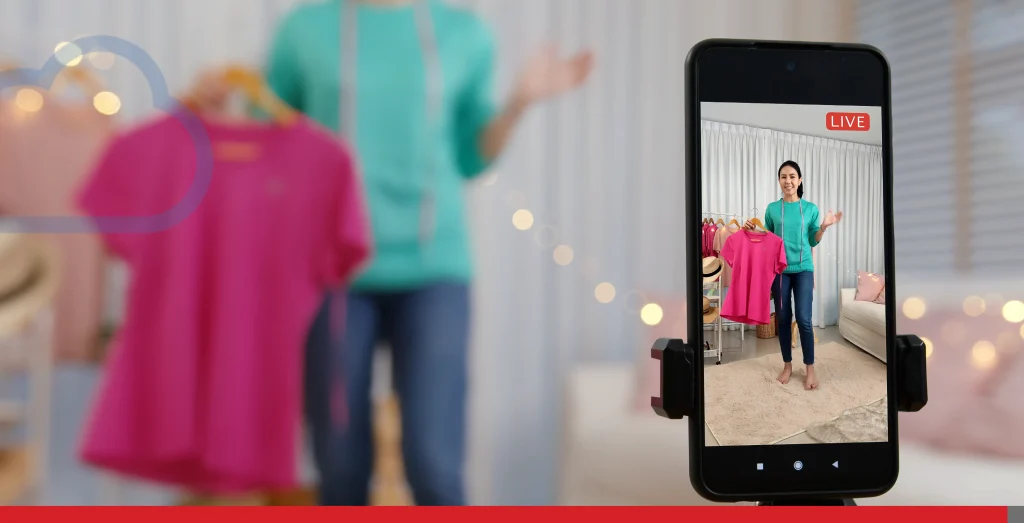User-generated content (UGC) has become the best-kept secret for eCommerce marketing success in the past years. But why? What’s the big deal about UGC? Because it’s real. It’s authentic.
UGC is also valuable content that enhances your SEO and digital marketing strategy by improving engagement and supporting your search rankings. It plays a key role in community building by facilitating a sense of belonging and connection among your customers, encouraging ongoing engagement and advocacy.
If you’re running an online store, you need to know how UGC can supercharge your brand, build trust, drive sales, and boost brand recognition—without blowing your budget on fancy ad campaigns.
Grab a coffee, get comfy, and let’s break it all down!
- What Is User-Generated Content (UGC)?
- Types of User-Generated Content
- How to Leverage UGC: The Best Strategies
- Measuring the Success of UGC: Metrics that Matter
- eCommerce Sales and UGC: Turning Engagement into Revenue
- Common Challenges (and How to Beat Them)
- Best Practices for UGC

What Is User-Generated Content (UGC)?
User-generated content is any content—photos, videos, reviews, testimonials, social media posts—created by your customers or fans, not your marketing team. It’s also known as consumer-generated content. It’s that selfie someone takes with your product, the five-star review on your site, or even a meme about your brand that goes viral on TikTok.
Why does it matter? Because it’s the kind of content that today’s shoppers trust way more than polished ads. UGC also helps communicate your brand story by sharing real customer experiences that reinforce your brand’s identity and values.
UGC vs. Generated Content: What’s the Difference & Why It Matters
Understanding the difference between user-generated content (UGC) and “normal” generated content is crucial for building a winning marketing strategy. UGC is content created by your customers or fans—think customer photos, reviews, and social posts—while generated content is produced by your brand, like blog articles, product videos, or official social posts.
UGC stands out for its authenticity and helps boost customer engagement. A customer’s opinion about a product holds great value online and helps others see exactly what your brand is about. This authenticity is a powerful tool for enabling brand loyalty and encouraging users to interact with your brand on social media platforms.
On the other hand, generated content allows you to control your brand’s message and provide detailed, informative content about your products or services. It’s perfect for establishing your brand as an authority and sharing in-depth information that helps guide purchase decisions.
The best marketing strategies find a balance between the two. Use UGC to create a sense of community and showcase real-life experiences, while leveraging generated content to educate, inform, and reinforce your brand’s story.

Why UGC Is a Game-Changer for eCommerce
Let’s get straight to the perks:
- Authenticity builds trust: When real people rave about your products, it feels genuine, and that’s what makes others want to buy. Positive feedback from existing customers provides powerful social proof that influences potential buyers.
- Boosts engagement: UGC sparks conversations and community. When you feature customer photos or stories, others want to join in. It’s contagious—in a good way.
- Saves you money: Why pay for expensive photoshoots when your customers are happy to share their own awesome content? UGC can fill your content calendar and cut marketing costs. DJI and GoPro are prime examples of companies that incorporate UGC into their marketing strategies.
- Supercharges SEO: Fresh, keyword-rich content from reviews and social posts helps your site rank higher on Google. Plus, it brings in long-tail keywords you might not have thought of.
- Builds community: UGC turns your customers into brand advocates and helps foster a sense of belonging, so important for local brands looking to stand out in a crowded market.
- Reaches new audiences: When your customers share their experiences, your brand gets exposed to their networks, helping you reach new audiences and increase brand awareness.
Types of User-Generated Content
UGC (user content) isn’t just one thing. Here’s what it can look like:
- Photos and videos: Selfies, unboxing videos, Instagram Stories, TikToks, and more. Visual content is gold for eCommerce. Encourage customers to post pictures of their experiences with your products. See our guide to engaging visual content for more ideas!
- Reviews and ratings: Written feedback, star ratings, and detailed testimonials on your product pages or third-party sites.
- Social media posts: Tweets, Facebook posts, Instagram hashtags, and TikTok challenges. Monitor and engage with post content related to your brand to boost interaction and trust.
- Blog posts and articles: In-depth reviews or stories written by customers or influencers.
- Contests and hashtag campaigns: Branded hashtags make it easy for fans to join in and for you to track submissions. Encourage brand-specific content created by users for your campaigns to increase authenticity and engagement.

How to Leverage UGC: The Best Strategies
Perfect. Now that you’re fully aware of what UGC means, it’s time to plan. Ready to harness the power of user-generated content? Start by planning and executing a successful UGC campaign as part of your strategy.
Here are some steps to do it most organically:
1. Encourage Reviews & Testimonials
- Make it easy for customers to leave reviews on your site.
- Follow up with a friendly email after purchase, asking for feedback.
- Incentivize honest reviews with discounts, loyalty points, or a chance to be featured. Positive reviews from real customers can significantly influence purchasing decisions by providing social proof and building trust.
2. Launch Branded Hashtag Campaigns
- Create a catchy, unique hashtag for your brand or product line.
- Promote it everywhere—on your website, packaging, and social media. Share and track submissions across different social channels to maximize reach.
- Feature the best submissions on your site and socials to encourage more participation.
3. Run Contests & Giveaways
- Ask customers to share photos or videos using your product for a chance to win, encouraging customer creativity in their submissions.
- Make the entry process simple, and highlight winners on your channels.
- This not only generates content but also builds excitement and loyalty.
4. Curate & Showcase High-Quality UGC
- Not all UGC works. Curate the best, most relevant content that aligns with your brand.
- Feature it on your homepage, product pages, and social feeds for maximum impact. When you share user-generated content, always give proper credit to the original creators by tagging them or mentioning their handles to foster trust and encourage ongoing engagement.
5. Integrate UGC into Product Pages
- Display customer photos, videos, and reviews right where shoppers are making buying decisions.
- This social proof can tip hesitant buyers over the edge by helping them make a confident purchase decision.

6. Collaborate with Influencers
- Partner with local influencers who genuinely love your products.
- Encourage them to create and share authentic content, not just paid ads, and integrate this influencer content into your marketing campaigns to boost authentic engagement and brand trust.
7. Use UGC Across All Marketing Channels
Don’t limit UGC to just one social media channel. Leverage user-generated content across different marketing channels—such as email newsletters, ads, landing pages, and even in-store displays if you have a physical presence—to create a consistent brand experience.
Content Marketing with UGC
UGC isn’t just for social media. It’s a powerful tool for content marketing, too:
- Build brand awareness: Every time someone shares about your brand, you reach new audiences.
- Generate leads: Authentic stories and testimonials can turn browsers into buyers.
- Create authentic campaigns: UGC-based campaigns feel less like ads and more like conversations, which resonates especially well with younger shoppers.
For more on building a winning content strategy, check out EasyHosting’s digital marketing trends for 2025.
Social Media Strategy: UGC in Action
Social media is where UGC shines brightest! Why? Because it lets you engage with your community. Like, comment, and share UGC to show you’re listening to your audience. Track how users interact with your UGC to measure engagement and understand what resonates most with your audience.
Here’s how to properly leverage UGC in a social media channel:
- Instagram: Feature customer posts in your Stories or on your feed. Use branded hashtags to curate content.
- Facebook: Create albums of customer photos, run contests, and share testimonials.
- TikTok: Launch challenges or duet campaigns to encourage creative video content.
- X (formerly Twitter): Retweet customer shoutouts and respond to feedback in real time.
SEO & User-Generated Content
UGC is an SEO powerhouse. Search engines prioritize sites with fresh, user-generated content, as it signals valuable content and ongoing engagement. Google loves sites that update regularly. New reviews and customer stories keep your site fresh.
- Keyword-rich: Customers naturally use keywords and phrases in their reviews that other shoppers are searching for.
- Backlinks: When customers share their experiences on their own blogs or social media and link back to your site, it boosts your domain authority.
- Rich snippets: Structured data from reviews can help your products appear with star ratings in search results, improving click-through rates.
Want to learn more about boosting your eCommerce SEO? Check out EasyHosting’s tips for increasing eCommerce sales.
Influencer Marketing Meets UGC
Influencer marketing and UGC go hand in hand, as they are also viewed as common users within your audience. Their reviews or experiences with your products will be visible, and your brand will appear to many users you weren’t even considering as part of your target audience.
- Influencers can kickstart UGC campaigns by sharing their own content and encouraging followers to join in.
- Their posts provide social proof, especially when they’re genuine fans of your brand.

Measuring the Success of UGC: Metrics that Matter
When it comes to user-generated content marketing, knowing what’s working (and what’s not) is key to making your marketing efforts count. Measuring the success of your UGC campaigns isn’t just about counting likes—it’s about understanding how user-generated content is moving the needle for your brand.
Start by tracking engagement rates on your social media platforms: likes, comments, shares, and saves all show how social media users are interacting with your ugc content. But don’t stop there. Keep an eye on conversion rates—how many potential customers are actually making a purchase or signing up after seeing user-generated photos or reviews? This is where UGC really proves its value.
Brand loyalty and customer retention are also important metrics. If you notice more repeat purchases or higher retention rates after launching UGC campaigns, you’re on the right track. Social media analytics tools can help you monitor these trends across all your social media channels, giving you a clear picture of how your marketing strategies are performing.
Don’t forget to track website traffic and online reviews. A spike in visits or a flood of positive customer content can signal that your UGC strategy is resonating. Keep tabs on the number of branded hashtags being used by your community—this shows how many social media users are actively participating and spreading the word.
Tools and Platforms for Managing UGC
Managing user-generated content doesn’t have to be overwhelming—there are plenty of tools and platforms designed to make the process seamless for eCommerce brands. Social media management platforms like Hootsuite or Buffer let you discover, curate, and share UGC across all your marketing channels, from social media pages to email newsletters and even eCommerce sites.
Social media listening tools, such as Mention or Brand24, allow you to track brand mentions and identify potential ugc creators who are already talking about your brand online.
For brands looking to streamline moderation, user-generated content management tools can help you approve, organize, and display only the most relevant and on-brand ugc content. Analytics platforms provide valuable insights into how your generated content is performing, so you can tweak your marketing strategy for maximum impact.
Influencer marketing platforms are another great resource, connecting you with creators who can help amplify your message and encourage more user-generated content. And if you want to keep your posting schedule consistent, social media scheduling tools like Later or Sprout Social make it easy to plan and share UGC in advance.

eCommerce Sales & UGC: Turning Engagement into Revenue
User-generated content isn’t just about getting likes, it’s also a powerful driver of eCommerce sales. When potential customers see real people sharing authentic customer-generated content, it creates instant social proof and builds trust, making them more likely to hit “add to cart.” This relevant content helps reduce cart abandonment and can even increase average order value, as shoppers feel more confident in their purchase decisions.
Optimizing your product pages with UGC not only improves the customer experience but also helps with search engine optimization, making it easier for new customers to find your products. Plus, using UGC to answer FAQs or provide customer support can reduce support inquiries and improve overall satisfaction.
Common Challenges (& How to Beat Them)
Although UGC can be seamless and it’s one of the most used strategies in marketing nowadays, there are always some challenges that everyone needs to battle. Here are our tips for these common scenarios:
1. Maintaining a steady flow of content: It can be tough to keep the UGC coming. Run regular campaigns and contests, and make it easy for customers to participate.
2. Quality and relevance: Not all UGC will be on-brand or high quality. Use moderation tools or manually curate the best content.
3. Legal rights: Always get permission before using customer content. Consider using UGC rights management tools to streamline this process.
4. Measurement: Track engagement, reach, conversions, and brand sentiment to understand public perception and see what’s working, then optimize your strategy.
Best Practices for UGC
Now that you have read everything in regards on how to start a UGC strategy for your brand. It’s time for the tips that need to last. The best practices that will make a difference in how your content is perceived in the long run.
- Keep it authentic: Don’t script or overly curate. Let your customers’ voices shine through.
- Moderate content: Ensure UGC aligns with your brand values and is appropriate for your audience.
- Reward participation: Feature top contributors, offer shoutouts, or give small perks to those who share.
- Promote across channels: Share UGC everywhere—website, socials, email, and more. Make sure to distribute user-generated content across different online platforms to maximize reach and impact!

Conclusion
User-generated content isn’t simply optional—it’s essential for any eCommerce brand that aims to establish its presence today. UGC is the future of marketing in Canada and beyond.
As technology companies continue to innovate, advancements in AI are enabling richer user contributions and more immersive content creation in user-generated content (UGC). New tools and platforms are making content creation more accessible for users, allowing brands to harness higher-quality and more authentic UGC.
As shoppers crave authenticity and community, brands that embrace UGC will stand out. Expect to see more brands using UGC in shoppable videos, social commerce, and even AI-powered campaigns!
Need help building your online presence or integrating UGC into your site? Check out EasyHosting’s web hosting solutions and digital marketing tips to get started. Or reach out to our team for expert advice and support—because your brand deserves to be seen (and loved) by all of Canada!
support@easyhosting.com
Call us: 1-888-390-1210
Want more eCommerce tips? Explore the EasyHosting blog for the latest trends, strategies, and insider secrets to grow your online business!
FREQUENTLY ASKED QUESTIONS
What is user-generated content?
User-generated content (UGC), also known as user content, is any content—reviews, photos, videos, social posts—created by customers or fans, not the brand itself.
How can UGC be used in marketing efforts?
UGC can be featured on product pages, shared on social media, included in email campaigns, or used in ads. It builds trust and encourages others to buy.
What are the benefits of UGC?
UGC increases trust, boosts engagement, improves SEO, drives sales, and builds a loyal community.
How can UGC be measured and tracked?
Track metrics like engagement (likes, shares, comments), reach, website traffic, conversions, and sentiment. Use analytics tools to see what’s working.
What are the common challenges of UGC?
Challenges include maintaining a steady flow of content, ensuring quality and relevance, getting legal rights, and measuring impact. These can be managed with the right tools and strategies.



